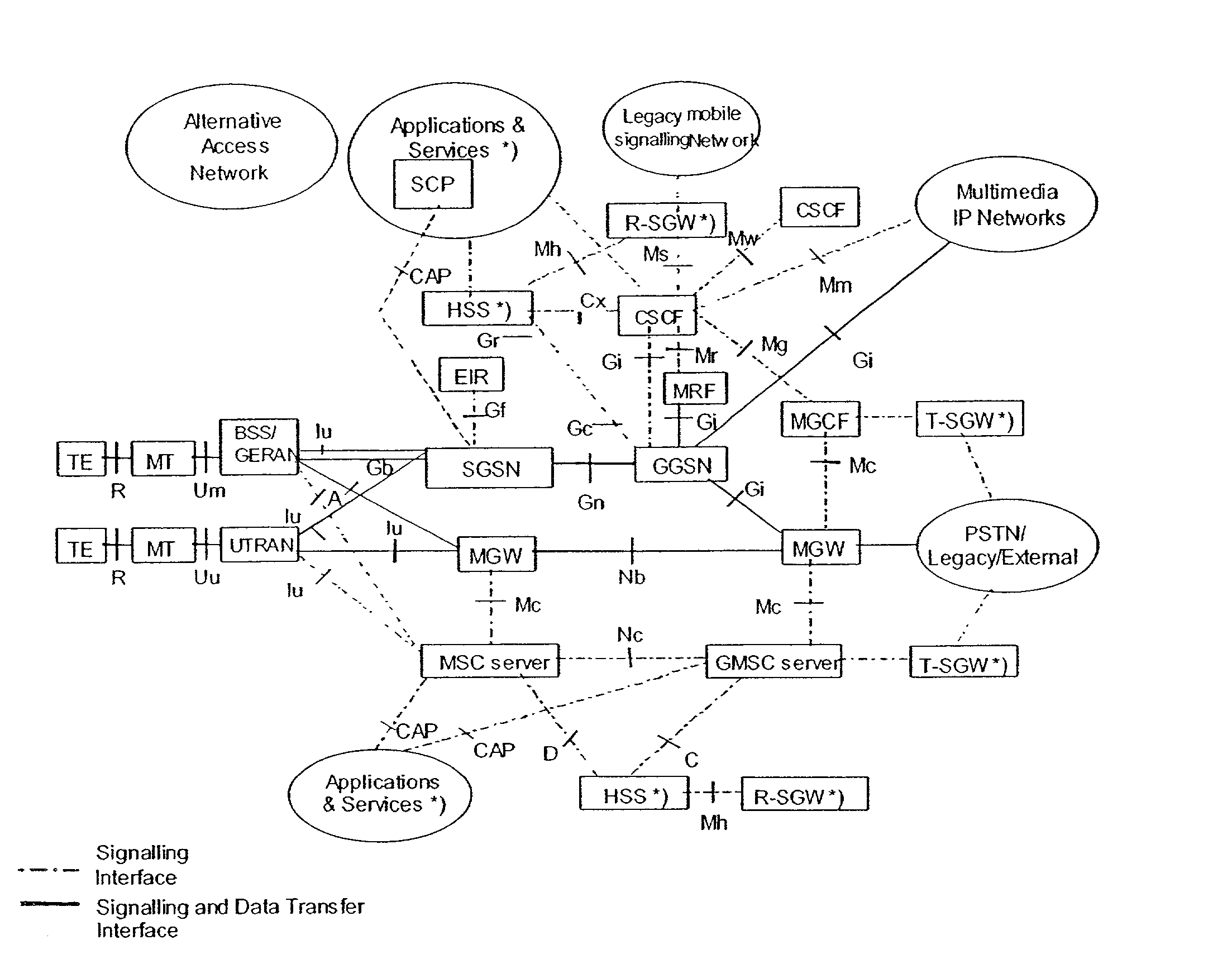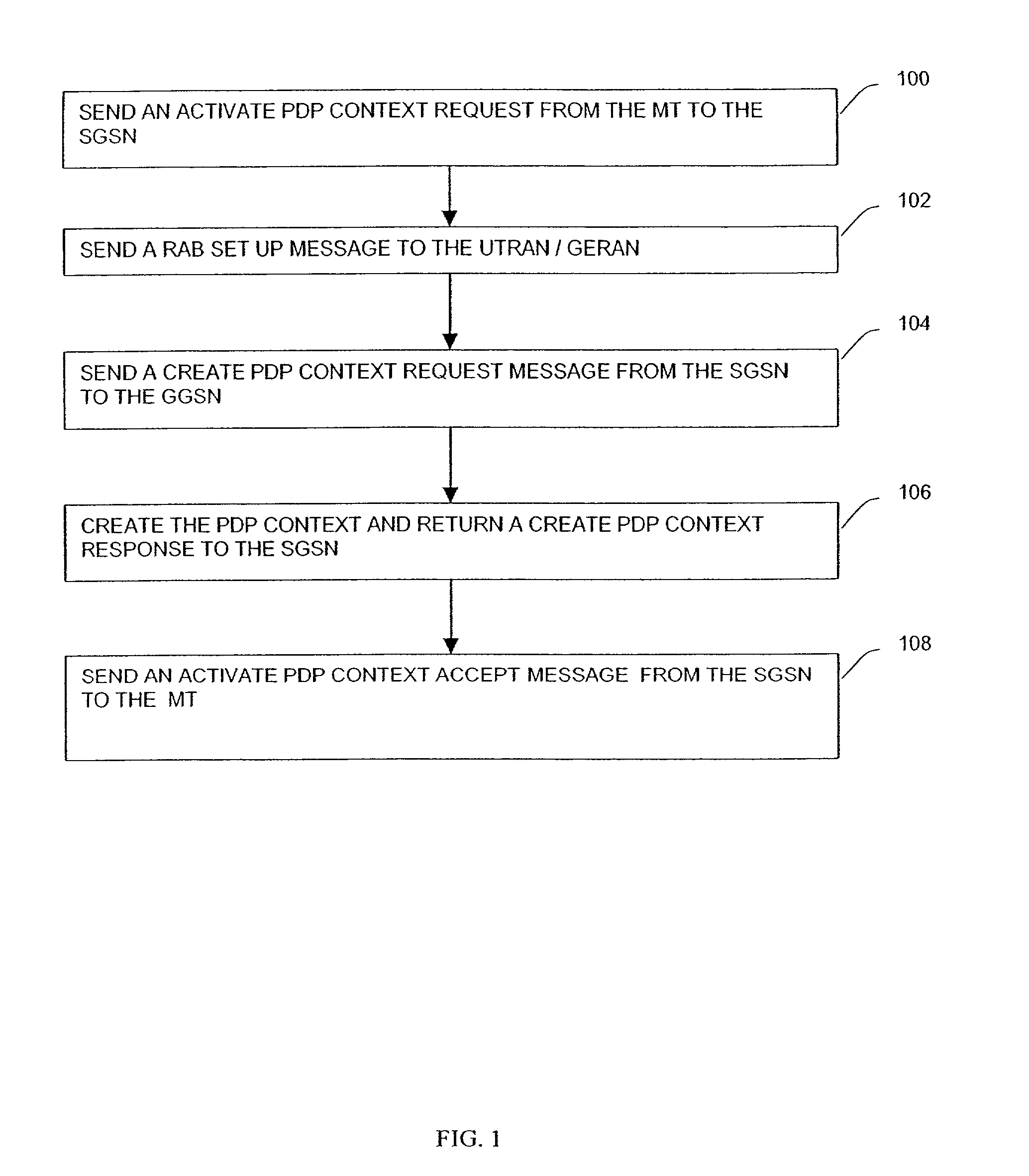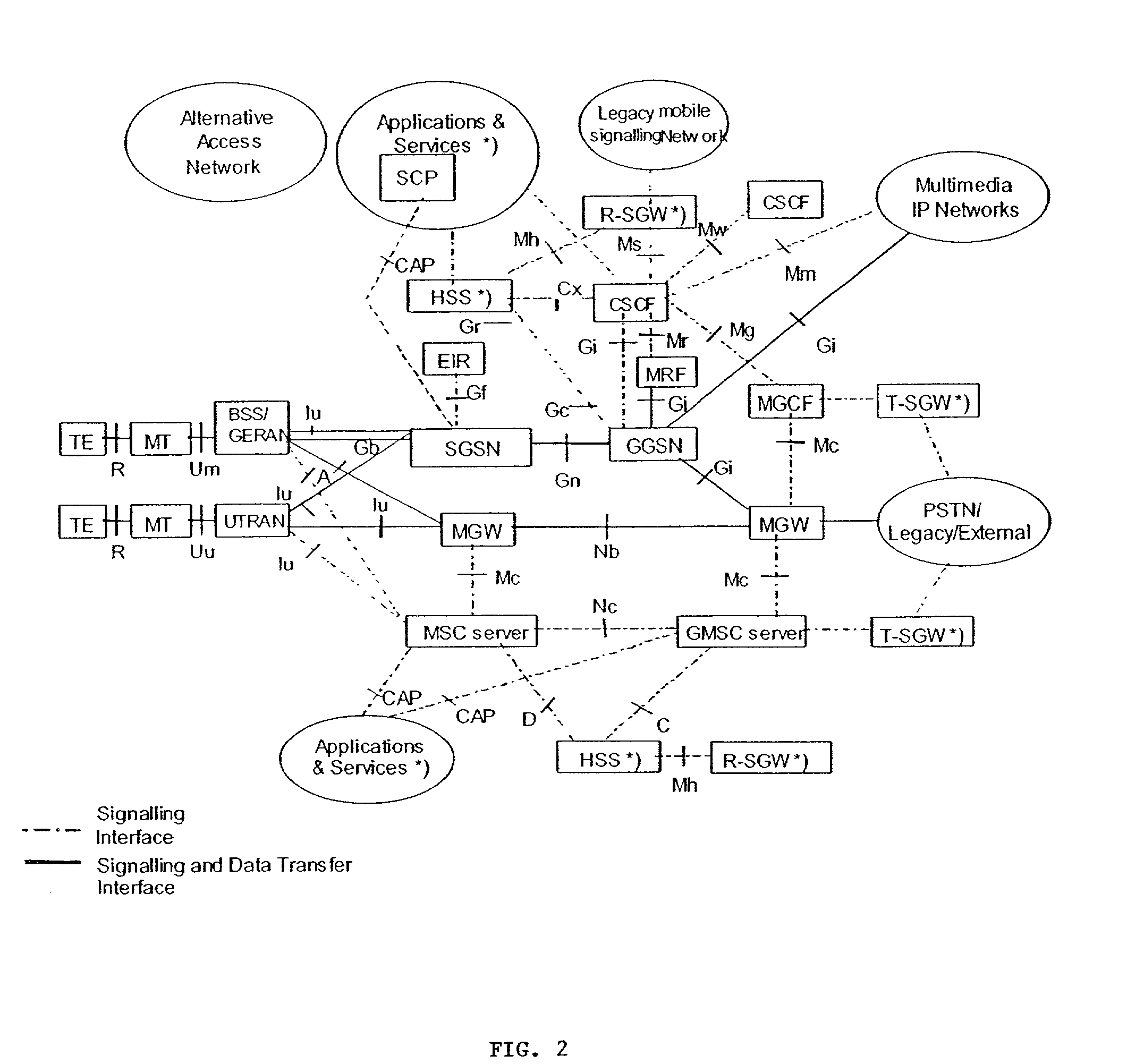Common charging identifier for communication networks
a communication network and charging identifier technology, applied in the field of communication networks, can solve the problems of complex use of call id and inability to combine all call event related data, and achieve the effect of greater flexibility in deciding
- Summary
- Abstract
- Description
- Claims
- Application Information
AI Technical Summary
Benefits of technology
Problems solved by technology
Method used
Image
Examples
embodiment 1
[0052] FIG. 3 illustrates a process of sending a charging identification in accordance with a first embodiment of the present invention. In UMTS all-IP networks, when GPRS / UMTS is adopted as access / transport network for multimedia and voice over IP services, charging will be performed independently at the GPRS / UMTS layer and at the application layer (e.g., the CSCF).
[0053] In the GPRS and UMTS networks, PDP contexts are created by the GGSN upon request from the SGSN (with a Create PDP Context Request message) that, in turn, receives the request from the MT (an Activate PDP Context Request message).
[0054] As illustrated in FIG. 3, the technique in accordance with the present invention begins at the application layer at step 300 in which a trigger is forwarded from the TE (Terminal Equipment) to the MT (Mobile Terminal). The trigger may be, e.g., a call set up indication including the requested logical channels and characteristics, sent from the TE to the MT to start PDP context activ...
embodiment 2
[0062] FIG. 4 illustrates a process of sending a charging identification in accordance with an arrangement of a second embodiment of the present invention. In UMTS all-IP networks, when GPRS / UMTS is adopted as the access / transport network for multimedia and voice over IP services, charging will be performed independently at the GPRS / UMTS layer and at the application layer (e.g., the CSCF).
[0063] In the GPRS and UMTS networks, PDP contexts are created by the GGSN upon request from the SGSN (i.e., a Create PDP Context Request message) that, in turn, receives the request from the MT (i.e., an Activate PDP Context Request). According to the second embodiment of the invention, the Charging Identification parameter is sent from the SGSN or the GGSN to the CSCF. Unlike the first embodiment, there is no need to send the Charging Identification parameter via the UE.
[0064] As described previously, in the first embodiment of the invention, the MT intercepts data packets that are sent from the ...
embodiments 1 and 2
Variation of Embodiments 1 and 2
[0089] In a variation of the first and second embodiments, the Charging Identification generated in the SGSN, GGSN or other network element is a Globally Unique Charging Identification (GCI). The GCI is a combination of the integer value 2 32-1 (4 bytes) and the ID of the network element which generated it (such as the SGSN or GGSN). The length or structure of the network element ID generating the GCI may vary according to the specific implementation. It is not necessary that the GCI be generated in any particular group of network elements. In any circumstance, the remaining network elements simply receive and use the GCI generated by the first network element.
[0090] After the GCI is generated, it is used during the entire call and the other network elements don't generate a charging identification, but instead use the GCI generated by the first network element. The GCI is created and transferred over several interfaces in the place of the Charging Id...
PUM
 Login to View More
Login to View More Abstract
Description
Claims
Application Information
 Login to View More
Login to View More - R&D
- Intellectual Property
- Life Sciences
- Materials
- Tech Scout
- Unparalleled Data Quality
- Higher Quality Content
- 60% Fewer Hallucinations
Browse by: Latest US Patents, China's latest patents, Technical Efficacy Thesaurus, Application Domain, Technology Topic, Popular Technical Reports.
© 2025 PatSnap. All rights reserved.Legal|Privacy policy|Modern Slavery Act Transparency Statement|Sitemap|About US| Contact US: help@patsnap.com



